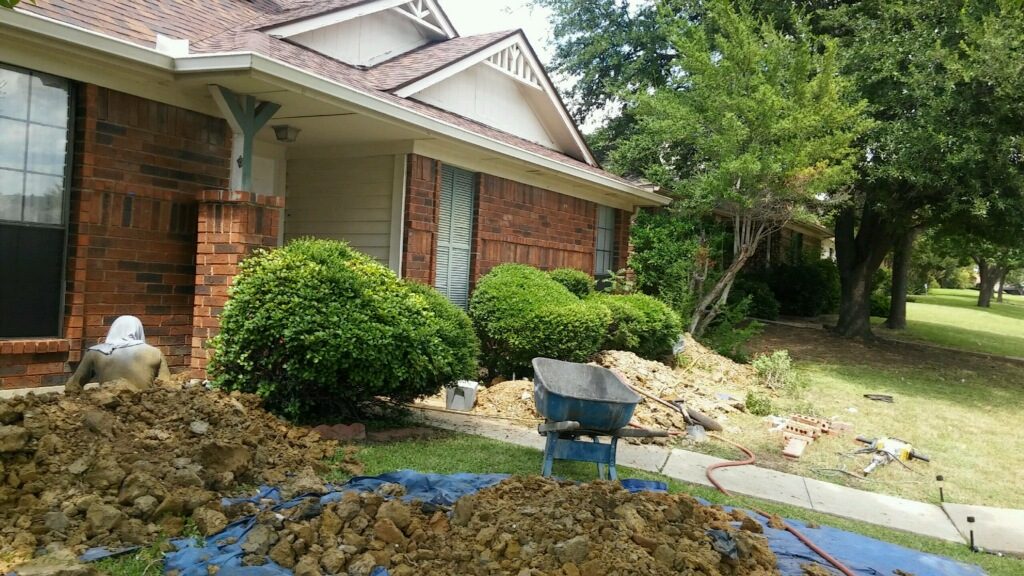How Does Your Soil Type Affect Foundation Stability? Expert Insights Revealed
Understanding Local Soil Composition: The Key to Preventing Costly Foundation Damage
At Dodson Foundation Repair, we’ve spent over two decades analyzing, testing, and addressing soil-related foundation issues across the region. What many homeowners don’t realize is that the ground beneath their home is far from static—it’s a complex, dynamic system that directly influences their foundation’s long-term stability. Our team brings a scientific approach to every property we evaluate. Unlike contractors who offer one-size-fits-all solutions, we begin with comprehensive soil testing to understand the unique characteristics of your property’s substrate. This allows us to develop targeted, effective repair strategies that address the root cause of foundation problems, not just the symptoms. Our meticulous attention to soil type has saved countless homeowners from recurring foundation issues and unnecessary repairs. We believe that educating our clients about their specific soil conditions empowers them to make informed decisions about protecting their most valuable investment.

The Fundamental Soil Types and Their Foundation Impact
Not all soils are created equal when it comes to supporting your home’s foundation. Understanding your property’s soil composition is the first step in preventing or addressing foundation problems.
Clay Soils: The Expansion Challenge
Clay soils are prevalent throughout our service area, particularly in the eastern neighborhoods near River Valley. These soils contain tiny, flat particles that create a dense, highly expansive material. During rainy periods, clay soils absorb water and expand significantly—sometimes increasing in volume by up to 15%. When drought conditions return, the soil contracts just as dramatically.
This continuous expansion and contraction creates a phenomenon engineers call “heave and settle” that places enormous pressure on foundations. A typical residential foundation sitting on clay soil can experience forces exceeding 5,000 pounds per square foot during severe expansion cycles. Over time, these pressures cause foundations to crack, shift, and fail.
At Dodson Foundation Repair, we’ve developed specialized stabilization techniques specifically designed for clay soil regions, including deep pier systems that anchor foundations below the active soil zone.
Sandy Soils: The Drainage Dilemma
In the western parts of our service area, particularly near Coastal Heights, sandy soils predominate. These coarse-grained soils offer excellent drainage but poor compaction characteristics. While they don’t expand and contract like clay, sandy soils can experience settlement issues, especially when water flow patterns change.
Heavy rains can wash away supporting soil particles beneath footings and slabs, creating voids that lead to uneven settlement. Additionally, improperly compacted sandy soils during construction can lead to delayed settlement issues that appear years after the home is built.
Our specialized approaches for sandy soil foundations often include compaction grouting and drainage correction systems that maintain consistent soil density beneath the structure.
Silt Soils: The Deceptive Middle Ground
Silty soils, common in the central neighborhoods around Meadow Creek, present unique challenges. With particles larger than clay but smaller than sand, silt initially appears stable but becomes highly unstable when saturated with water.
When wet, silt can actually liquefy under pressure in a process soil engineers call “quick conditions.” This liquefaction dramatically reduces the soil’s load-bearing capacity and can lead to sudden, unexpected foundation settlement.
For homes built on silt-dominant soils, our engineers typically recommend specialized drainage solutions combined with strategic soil amendments that improve stability during wet conditions.
Recognizing Warning Signs Based on Your Soil Type
Different soil types produce distinctive patterns of foundation distress. Knowing what to look for can help you address issues before they become severe.
In clay soil areas, watch for:
- Diagonal cracks that are wider at the top than the bottom
- Doors and windows that stick during rainy seasons but improve during dry periods
- Upward movement of interior floors or foundation elements
In sandy soil regions, be alert for:
- Uniform settling of one side or corner of the home
- Vertical cracks that maintain consistent width
- Doors and windows that consistently stick regardless of weather
For silt-dominant areas, monitor for:
- Sudden appearance of settlement after heavy rains
- Foundation movement that coincides with water events
- Soft, spongy soil around the foundation perimeter
At Dodson Foundation Repair, our free foundation assessments include soil identification that helps homeowners understand the specific challenges their property faces.
Proactive Measures for Different Soil Environments
While soil type is permanent, its impact on your foundation can be managed effectively with proper techniques.
For clay soil properties, we recommend:
- Installing and maintaining consistent moisture control around the foundation perimeter
- Properly designed gutter systems that direct water at least 10 feet away from foundation walls
- Strategic placement of deep-rooted, non-invasive landscaping that helps stabilize moisture levels
Homeowners with sandy soil benefit from:
- Properly engineered drainage systems that prevent erosion beneath the foundation
- Compaction monitoring during any new construction or addition work
- Regular inspection of water-carrying utilities for leaks that could undermine soil support
For silt-dominated properties, effective strategies include:
- Installation of foundation drains that rapidly remove water from the soil during heavy precipitation
- Careful monitoring and maintenance of plumbing systems to prevent leaks
- Grading improvements that direct surface water away from the structure
Schedule Your Free Soil Analysis and Foundation Assessment Today!
Don’t wait until cracks appear or doors stick to discover what’s happening beneath your home. Understanding your soil type is the first step toward protecting your foundation and preserving your property value.
Call us today to schedule your no-obligation consultation with one of our certified foundation specialists. Your home deserves a solid foundation—built on solid knowledge of what lies beneath.
